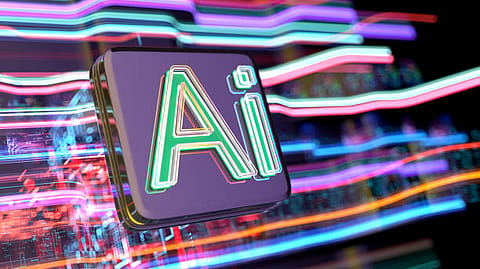Outlook 2025: Sustainability & GenAI —2024’s breakthroughs and promise of what lies ahead
Gen AI’s potential impact spans sectors and could deliver positive sustainability change.

Advances in generative AI have dramatically accelerated AI adoption over the past two years, marked by an ability to design, train, and most important, run AI at a large scale and for many millions of users. Gen AI’s potential impact spans sectors and could deliver positive sustainability change. In fact, Gen AI is already being used to further all 17 UN Sustainable Development Goals (SDGs)—from the goal of eliminating poverty to establishing sustainable cities and communities and providing quality education for all.
Generative AI has opened even more possibilities. By 2018, it was becoming clear that AI could play a major role globally in promoting not only productivity and economic growth but also social good. A report we published at the time outlined how AI capabilities, from natural language processing to sound recognition and tracking, could be used in 170 use cases to benefit society—including to promote equality and inclusion, improving crisis response, and protecting the environment. However, global challenges, including ongoing and reignited geo-political conflicts, the climate crisis, high inflation, and the lingering effects of the COVID-19 pandemic, have converged to significantly hinder progress on sustainable development. We are currently on track to meet only 17% of the Sustainable Development Goals (SDGs) targets by 2030, and as global leaders juggle multiple issues at the same time, progress is becoming even more challenging—widening the gap between action and goals. The world is at a critical juncture. Gen Al, if developed and used responsibly, could accelerate businesses impact on sustainable development and bridge the gap to 2030. Gen Al can provide the critical capabilities to accelerate innovation and unlock the business transformations needed to overcome the headwinds that continue to challenge sustainable development.
Gen Al has the power of transforming business and unlocking unprecedented acceleration in sustainable development. Generative AI can help with sustainability in several ways, including:
- Supply chains: GenAI can help businesses create more efficient, transparent, and environmentally responsible supply chains.
- ESG reporting: GenAI-powered tools can help users create accurate ESG reports that comply with regulatory standards.
- Sustainability goals: GenAI can help companies generate potential future scenarios based on current ESG trends, which can help with planning long-term sustainability goals.
- Data collection: GenAI solutions can autonomously collect and catalogue data dictionaries and metadata from internal IT systems, mapping it to an ESG data model.
Recommended Stories
- Renewable energy: AI can help optimise energy flow, reduce waste, and increase efficiency in smart grids. AI algorithms can also improve the performance and maintenance of renewable energy sources like solar and wind power.
- Decarbonisation: GenAI could help drive decarbonisation; GenAI-driven transformation has the potential to make operations more carbon efficient.
In addition to the above adoption scenarios of Gen AI in sustainability, Gen Al can act as a circular enabler. Imagine if it could tackle the logistical and analytical barriers to developing a truly circular economy. Gen Al can step in as an assistant for research teams to identify promising alternative materials and embedding sustainable design principles across products and services. Procurement and logistics teams could also leverage Gen Al to help optimise transportation and inventories as well as complex reverse logistics networks. Gen Al can also help with broader engagement and action. Customers and technicians can leverage tailored instructions to help with repairs, extending product life. Recovery and recycling vendors can more effectively separate valuable materials from waste streams with Gen Al's help. It can also help be an information aggregator, helping businesses learn best practices, improve communication across the value chain, and advise regulators on system-wide change.
Going forward in 2025, scientific breakthroughs will increase the effectiveness of Gen AI at pattern recognition, prediction, and creation. This progress will coincide with a rapidly growing number of successful Gen AI deployments, however, there are still challenges to scaling their use for addressing the SDGs. Realising this potential will require stakeholders to collaborate more closely to ensure access to adequate talent and robust data solutions, as well as to Gen AI applications and models that are more open-sourced or scalable across user geographies around the world, thereby meeting people at the point of need.
(INR CR)
By collaborating to find ways to put Gen AI to work at scale for social good, mission-driven organisations, governments, foundations, universities, ecosystems of developers, and businesses can help solve some of the world’s most challenging and intractable problems. They can help thwart human trafficking, ensure girls and children all over the world receive the education they deserve, protect forests from illegal deforestation, support the health and safety of pregnant women and newborns, and so much more. If these things aren’t worth fighting for, what is? Gen AI could be the force propellent in defining the new next in sustainability.
(Sameer Dhanrajani is the CEO of advisory and consulting firm AIQRATE & 3AI)